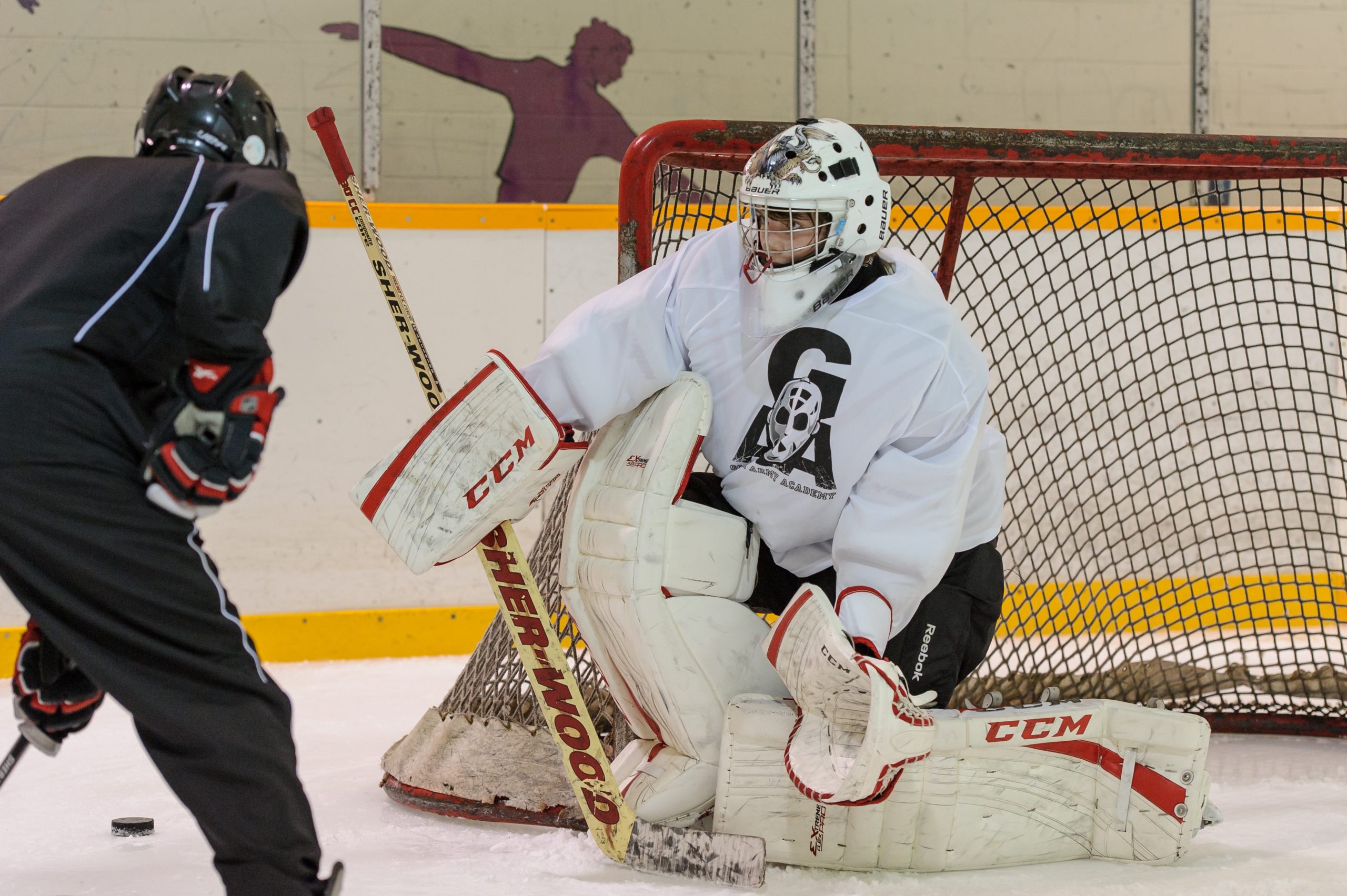
VH vs RVH
For a goaltending coach, there isn’t much better than sitting in a room with a handful of other goaltending coaches, and discussing techniques and theory. And at times, there isn’t much more frustrating than hearing that other goalie coaches are teaching their students about something which you feel will not benefit the development of a goaltender.
Although extremely busy during the pre-season with goaltending evaluations, I had the chance to speak to an evaluator from another local goaltending school between sessions about the hot topic debate of whether it was best for goaltenders to apply a Vertical Horizontal (VH), or a Reverse Vertical Horizontal (RVH) at the post position. There’s a lot of buzz about this technique due to the rise and success of Jonathan Quick over the past few seasons, as well as its popularity in Sweden and Finland.
It’s no secret that the game of hockey is constantly evolving with new rules, equipment, etc. Therefore, it should also come to no surprise that goaltenders are always going to be looking for a better way of doing things. Goalie Army Academy ensures that all of its students learn to apply the R3E System in order to rank efficiency at the top of the student’s list of things to implement into their game. Without efficiency, a goaltender will abandon the utilization of proper technique resulting in falling further behind the play with every move that they make. And in order to become efficient, a goaltender must simplify their game as much as possible. But does a RVH really make more sense than the utilization of a VH? After all, Jonathan Quick of the Los Angeles Kings applies a RVH and it works well for him… But what is a RVH or a VH?
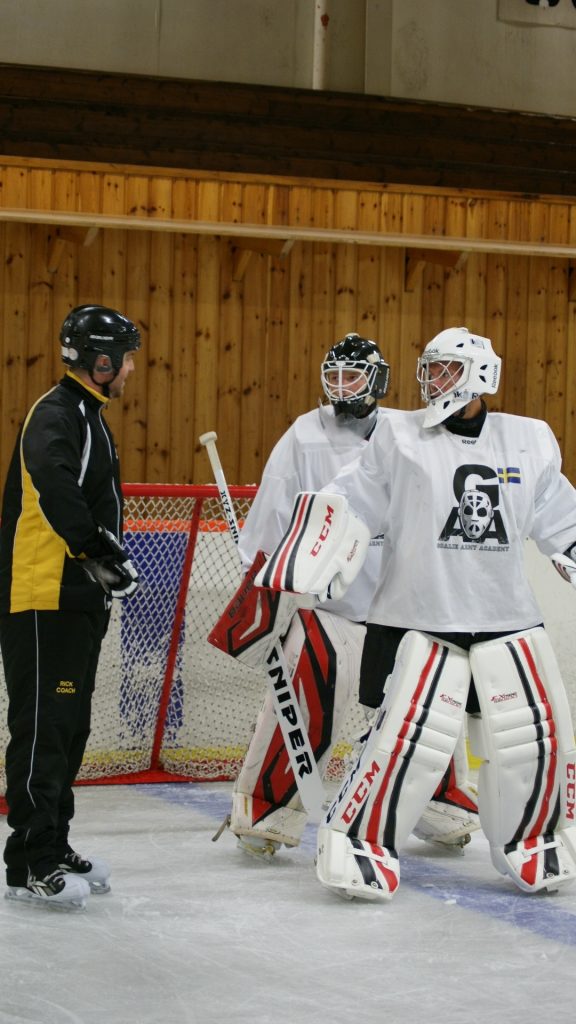 RVH: The Definition
RVH: The Definition
The RVH is best done with the post-side skate blade on the post along with the knee dropped. The wide-side knee is raised off of the ice, and the body leans toward the post which the skate blade is on closing the gap above the post-side leg. By doing the RVH correctly, the goaltender is applying a seal against the post with their body to cut off any visibility of the net to the shooter from close-proximity angles situated below the bottom of the circle, but above the goal line. Many say that this technique is best applied for wraparounds and jam plays close to the posts.
VH: The Definition
The VH is best done at the same angles and proximities as the RVH. The VH allows goaltenders to place the post-side pad in a vertical position against the post. The pad and shoulders face toward the corner and creates a seal against the post. Applying the other leg into a one-knee-down position is best used by getting the knee as close to the post-side ankle as possible in order to ensure that no gaps are displayed between the horizontal leg’s knee, and the vertical leg’s ankle.
RVH vs VH: The Comparison
As you can see after reading the above definitions, the RVH and the VH both cover the post-side angles fairly well, and evenly. However, how do they really compare when the puck isn’t being shot directly at the goalie immediately after crossing the goal line, but is passed instead?
In the event of a pass, the goaltender would be capable of a more explosive recovery into a butterfly blocking position with better depth of his/her crease with a VH. The reason for this is that their pushing leg’s skate blade is directly under and in line with their shoulder & hip, therefore allowing for additional explosive power, speed, and direction control. By positioning the skate blade this way, it allows the goaltender to slide in various angles and depths of the crease.
Applying a RVH in the same scenario may allow the goaltender to get across the net at the same pace (if pushing off of the post with the skate blade). However, the goaltender may have some difficulty with the depth of their crease. In the event that they apply a RVH, they will therefore be unable to cut down on their angles due to the angles that their skate blade is capable of pushing them to. Not only will they lack power and explosive speed with their push, but because of the upper body leaning toward the post to create a seal, their weight distribution is off-centered. This may cause a fraction of a second delay to straighten the upper body, and then push off of the post versus the already proper alignment of the body which the VH offers in order to push from the post position without the need to straighten as the goaltender will already be in this position.
During my conversation with the other goaltending coach, he argued that when they go to Sweden during the summer to work with a hockey school there, Swedish goaltenders love to apply the RVH. Based on my experience in Sweden, I would have to agree. Swedish goalies like to apply the RVH a lot of the time. There are a couple of important aspects to consider why this method may be more popular and useful in Sweden versus in Canada however:
- International Ice Surface
- With an international ice surface, comes of a longer distance passing game. On an international ice surface, players are able to spread out more to allow for wider passing lanes. With more distance between shooters, the goaltender has more of an advantage to time his positioning well. This will then allow more time to goaltenders in two ways:
- Sliding across the crease, finding the middle of their net, and then cutting down the angles by coasting to the top of their crease as they recover to a standing position
- The more distance between the shooter and the goaltender, the more reaction time the goaltender will have. On an international ice surface, goaltenders have more time to read, and react
- With an international ice surface, comes of a longer distance passing game. On an international ice surface, players are able to spread out more to allow for wider passing lanes. With more distance between shooters, the goaltender has more of an advantage to time his positioning well. This will then allow more time to goaltenders in two ways:
- Net Moorings
- In Canada, most of the holes which were drilled into the ice by the ice crew at local arenas, and then filled with the net’s pegs were removed for the safety of minor hockey players who went sliding into the net or posts. When these pegs were utilized throughout the majority of rinks across Canada, goaltenders had a great advantage of being able to push off of the posts with their skate blades with explosive power. Unfortunately for goaltenders in Canada now, most arenas don’t utilize the same kind of pegs anymore. Instead, net pegs now allow for much more give then they used to resulting in the net being pushed out of place easily.
- At many rinks in Sweden, they still utilize the older style pegs. Because of this, goaltenders are capable of utilizing the immobility of their nets to their advantage by pushing off of the posts with their skates with a lot of force and power without the worry of receiving a penalty for delaying the game. This allows them to gain the centre of their net more quickly, and therefore allows for more time to recover to the top of their crease.
Although Goalie Army Academy feels that the VH is a more useful and efficient technique for various game situations which enable the goaltender to push into more depths and angles of their crease, we do understand the need for a goaltender to use the techniques which they feel would benefit them most when added to their toolbox of options. The most important thing to keep in mind however is ensuring the simplification of one’s game to work with their existing technical foundation.
What’s being lost within this topic of discussion is the fact that no two goaltenders are the same. Even with being taught by the same goaltending coach for years, goaltenders will react differently under the same circumstances at some point or another. So why then, are goaltending coaches teaching the exact same techniques to all of their students? A foundation of proper technique is important. However, so is simplification & efficiency.
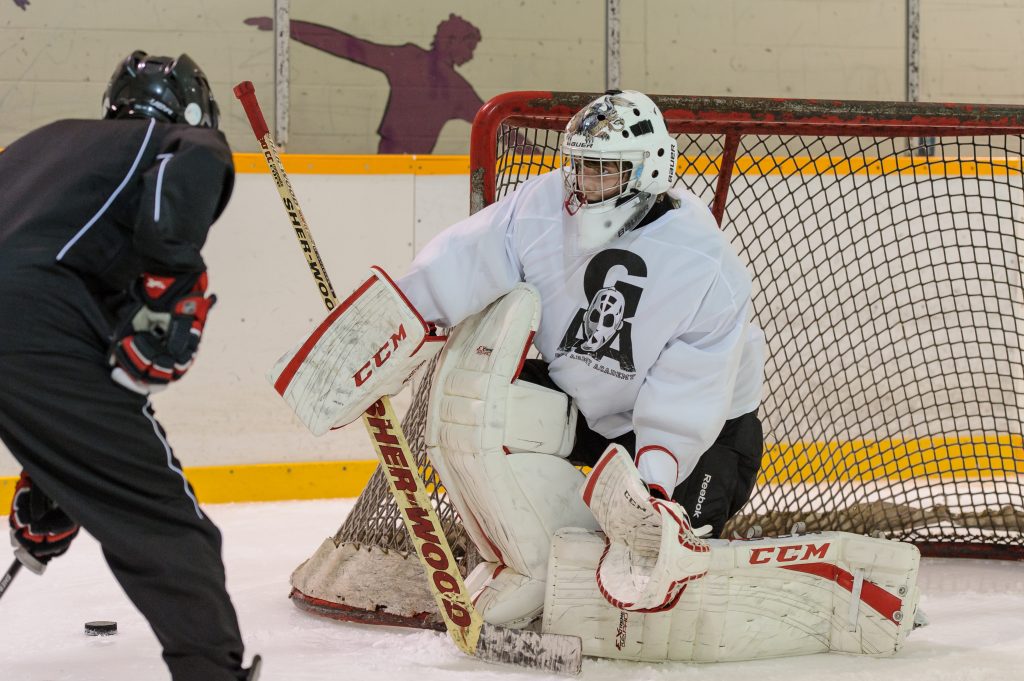 The Exception to the Rule
The Exception to the Rule
The key here is that Jonathan Quick, who consistently applies the RVH to his game, is a professional athlete. Jonathan Quick is also an extremely agile, and extremely flexible goaltender with lightning fast reflexes and amazing eye-hand coordination. What works for him is what works for him, and just because it works for one, does not mean that it should work for all. For instance, during Patrick Roy’s era, every goaltender who came along was applying the butterfly in almost every situation that they were faced with. A few others who applied the same techniques emerged, and had a lot of success at elite levels of hockey. But also during Roy’s time in the NHL, Hasek came into his own by applying various techniques which worked for him. Sure, at times he may have looked like a fish out of water. But it worked. Essentially, like Hasek, Jonathan Quick is an exception to the rule and in this case, with this technique, what’s good for him may not necessarily be good for all.
Coaches are able to teach a base foundation to their students in order to ensure that their technique comes along well. But at some point, effective goaltending coaches must customize their coaching plans to work with each individual goaltender to ensure that the techniques which they’re being taught, are working for each individual student. By not doing so, the coach is not helping their students by attempting to train them with cookie cutter methods.
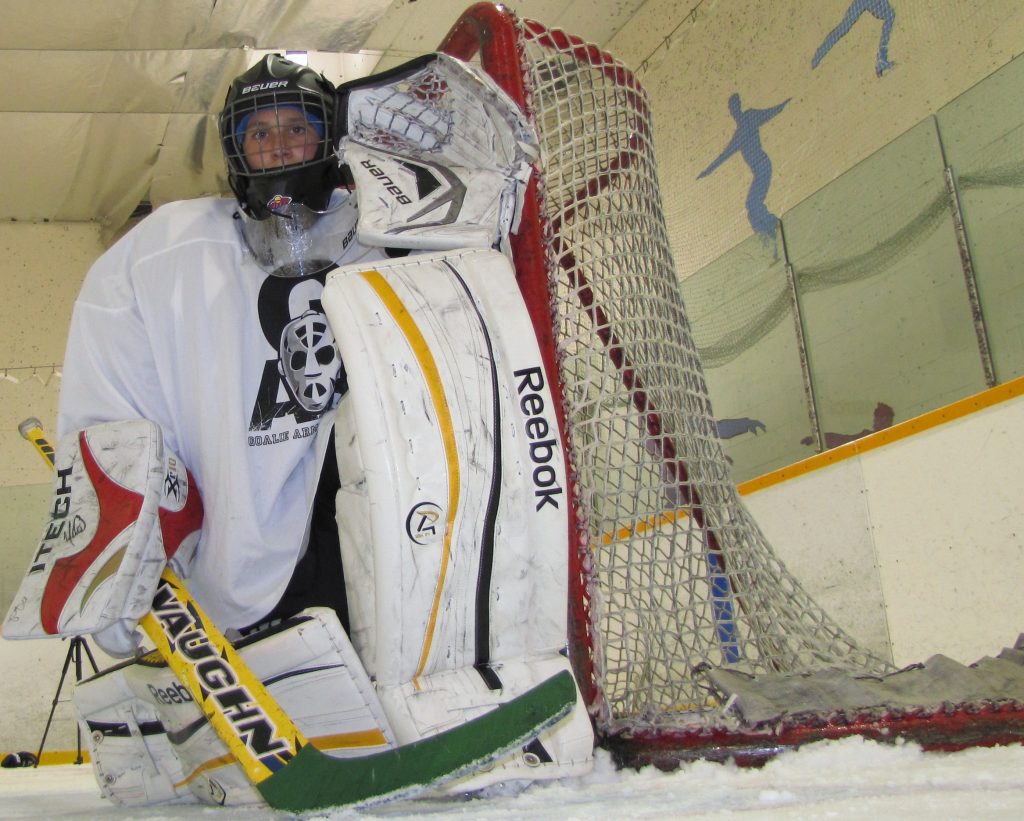 Adjusting Your Game
Adjusting Your Game
During the evaluations this season, I’ve been lucky enough to see various techniques from goaltenders from all ages and learning backgrounds. But one aspect became consistently evident as I looked on; many goaltenders had trouble with adjusting their game.
Through learning from various sources, and goaltending coaches, goalies become more aware of additional options available to them, how they can work these options into their game with efficiency, and how they may be able to keep their opponents who may also study the game and their opponents guessing. Unfortunately, over the years, I have come into contact with various goaltending coaches who feel that there is only one way of doing things, who feel that their way is the best (and only) way, and who more importantly wish to protect their “brand” of “modern” goaltending techniques. As a coach, it’s easy to say that, “this way is the best way” but are you really doing your students any favors by teaching them to be closed minded & potentially hindering their development on and off of the ice? Granted, goaltending coaches are limited to the time restraints of assigned practice time within team practices, and are running clinics and schools of larger groups of goaltenders where their coaching can only go so far. But coaches ask their players, students, and goaltenders to be capable of adjusting their game effectively. Is it not only fair that we may ask the same from our goaltending coaches? And ensure that their answers carry some insightful theory?
Coach Rick Besharah added his two cents on the RVH topic via the comment section of this article at In Goal Magazine. Please feel free to read the article and Rick’s comments at the bottom of the page for additional insight on the topic.
If you’re open minded, and receptive to coaching, then we’d like to work with you to improve your game. Check out our programs and training options in order to see how Goalie Army Academy’s coaches can make a difference in your game.

Leave a Reply